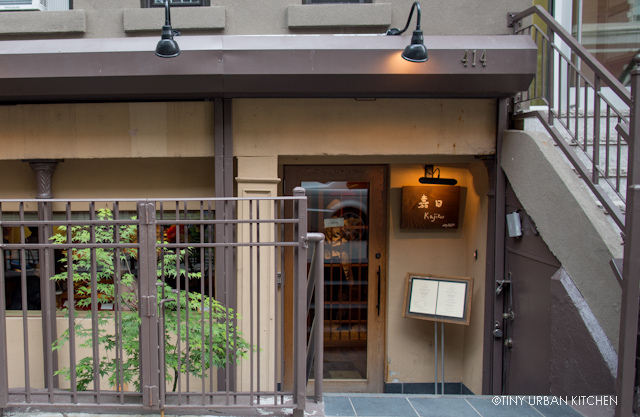
This is the eight post in the Eating the Big Apple series. Other posts include Soba Koh, Sylvia's Restaurant (Gospel Brunch), Torrisi Italian Specialties, Ippudo,Tasty Hand Pulled Noodle, Il Buco Alimentari & Vinera, and Shake Shack.I've heard of this place so many times.
First, in the thick of Project Food Blog in 2010 (wow, I can't believe that was 2 years ago!) when we were down to the final three contestants, fellow contestant Marc Matsumoto wrote a really creative entry about this place.
About a year later, friends of mine visited and absolutely fell in love with it. Knowing that I love vegetables, they continued to bug me to try it. "Jen, I think you'll really like it."
I definitely tried to go. Not surprisingly, this two star Michelin restaurant was really hard to book.
It wasn't until later that I found out the original chef, Masato Nishihara, had announced he was moving back to Japan in April 2012. People came in droves to experience his food before he left.
This past June (right after Nishihara left) I got the unexpected opportunity to visit New York again, this time to attend the Saveur Food Blog Award Celebration in New York (I still can't believe I won). I called Katjistu immediately and finally landed a seat at the table with the new chef.
I was so curious. What would shojin ryori taste like?
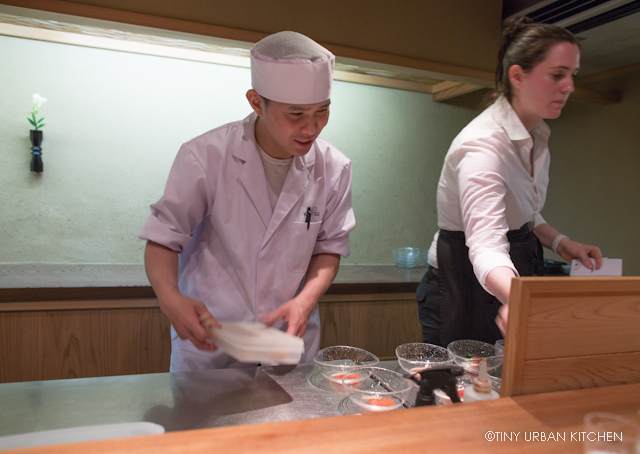
Shojin ryori is a specific type of Japanese cuisine that originates from Zen Buddhism. The cuisine is strictly vegan and emphasizes bringing out the natural flavors of fresh, seasonal ingredients.
Ryota Ueshima, the new chef at the helm, had previously worked at Murasaki no Wakuden, one of the top kaiseki restaurants in Kyoto. Kaiseki is not vegan, but it incorporate a lot of the same philosophies as shojin ryori, most notably the art of creating and presenting fresh, seasonal ingredients in the utmost exquisite way in order to best showcases their natural flavors and colors.
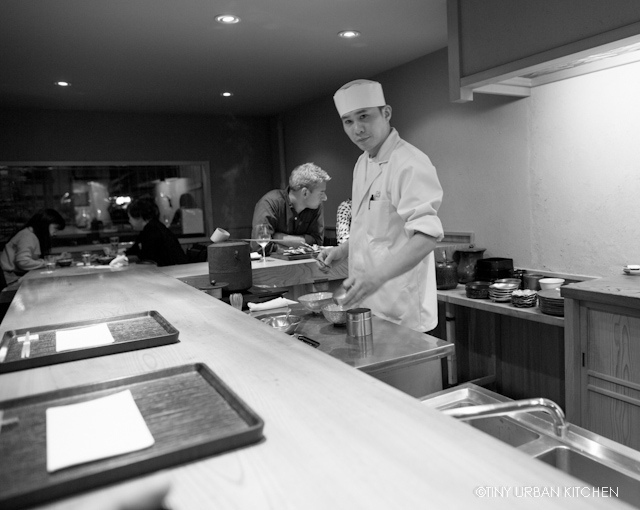
The restaurant includes both normal style seating and "sushi bar" style seating. We sat at the bar, which was great because it gave us a front row view to all the action in the kitchen.
The menu only has tasting menus. You can either order the four-course “Kaze” ($50) or the eight-course “Hana” ($70). The Hana and Kaze share the first four courses, but the Hana includes three additional dishes, including house-made soba noodles, dessert, and matcha.
We decided to go with the Hana, since Bryan always thinks you should try a restaurant's "signature" or flagship offering, especially if it's your first time and you're going to write a blog post about it.
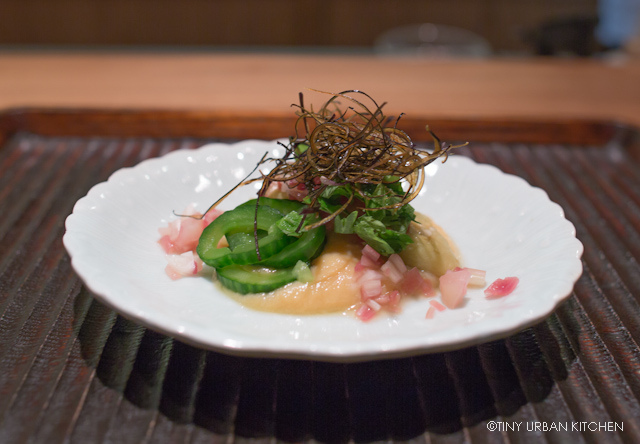
We began with the first dish, Summer Eggplant with White Miso Sauce. I was surprised that the miso paste was actually a bit sweet. The dish had a pretty strong ginger essence. The deep fried (shallot?) strings on top gave the salad a nice crunch, and overall the dish felt simple, clean, and balanced.
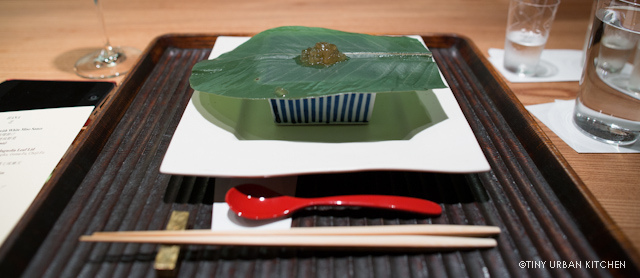
The second course came hidden underneath a huge Magnolia leaf. In fact, it was called Shiitake Mushroom Soup with Magnolia Leaf Lid.
Inside there was a clear broth filled with fried shiitake mushrooms, house made fried tofu, syungiku, goma-fu, and choji-fu (the "-fu" being different types of pillowy wheat gluten blocks).
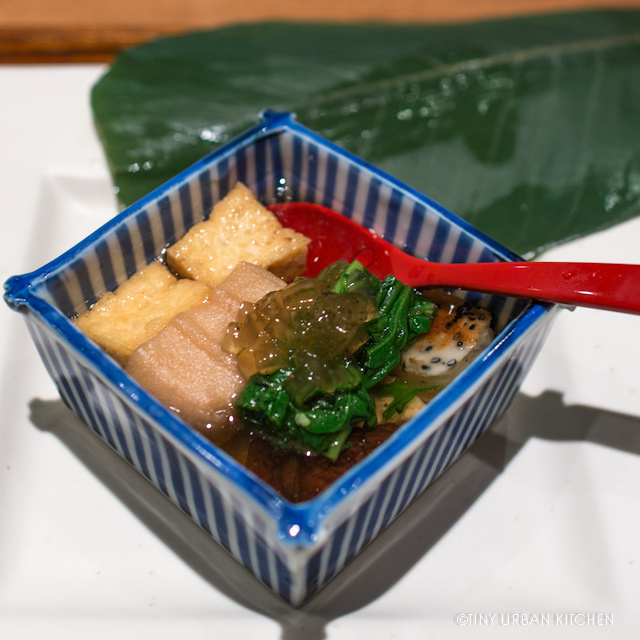
I absolutely loved the two types of fuyu, especially the more chewy one. The soup flavors were subtle yet complex at the same time, with a deep mushroom base supported by white peppery overtones. Although the dish was not very salty, the deep umami from the mushroom stock provided plenty of depth to the entire dish.
This was one of our favorite courses.
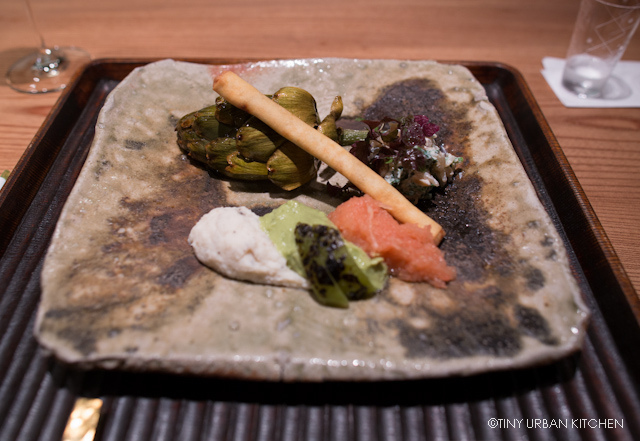
The next course was a fun play on chips and dip. The "chips" were actually leaves from a fire-roasted artichoke, while the "dips" were mashed up versions of lilly rosebud, avocado, and squash with plum. From a distance, the colors of the dips almost resemble a typical sushi plate, with the avocado as wasabi and the pink squash with plum as the ginger.
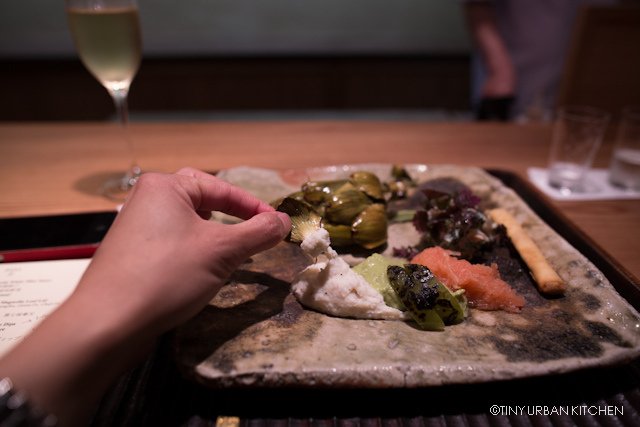
These "Artichoke Chips with Vegetable Dips" were served with a konnyaku yam with tofu sauce and a brown mustard spring roll. The mustard spring roll, which was rolled as thinly as a pencil, was crunchy with a strong yet vinegary zing from the mustard inside. I loved it. The dips were OK, but didn't especially strike me as that interesting.
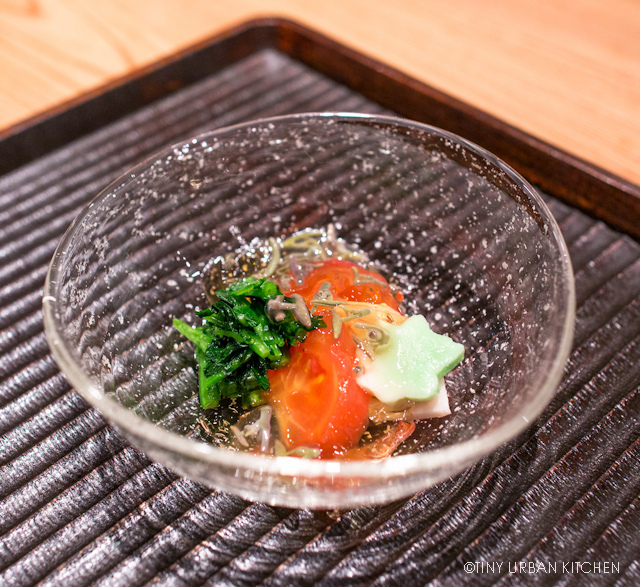
The next course, simply yet deceptive called Vinegared Summer Vegetables, was beautiful and exotic at the same time. It consisted of ingredients like tomatoes, junsai, cresson, lotus root, and kaede-fu. Again, I loved the clean, simple, yet very balanced flavors of the various cold components.
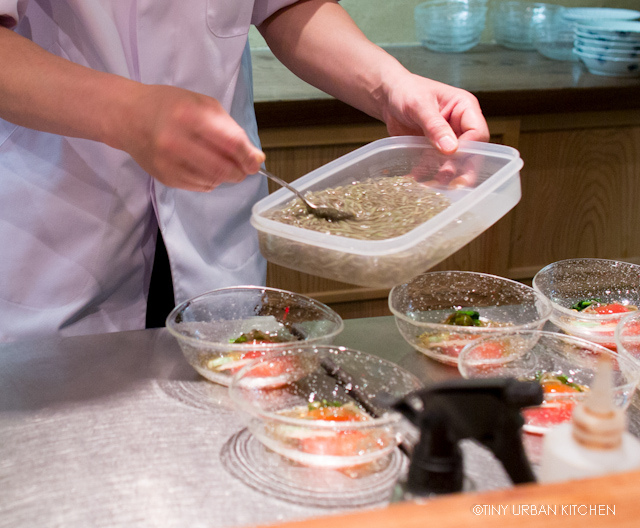
"Junsai" is a water plant that is slightly gooey and gelatinous. These plants grown in mud ponds in Japan, the best being from Kyoto. Only when the junsai is grown in its native environment (transplanted ones won't do) will its young shoots develop the highly prized gelatinous covering. It's that stuff he's spooning in the picture up top.
"Cresson" is the green vegetable, which was briefly blanched while kaede-fu are the spongy, wheat-gluten based stars.
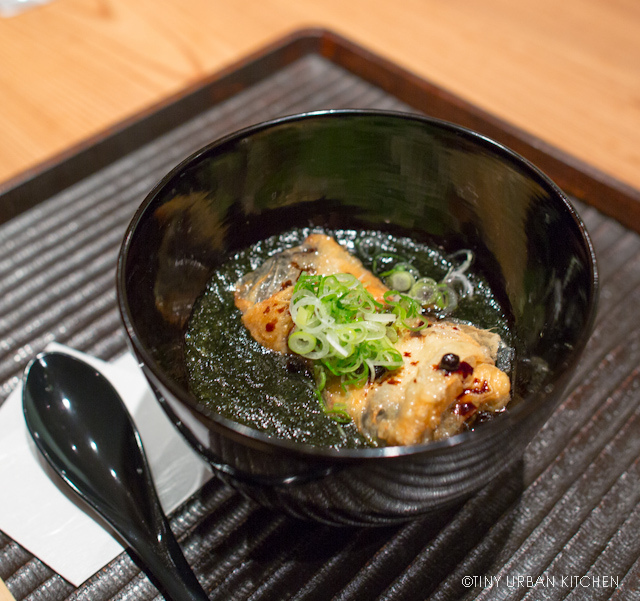
The next course, Fried Yuba Wrap with Morel Mushroom and Hijiki, was deeply flavorful. The soup was thick, with a strong essence of seaweed from the hijiki, a deep, black, and fragrant Japanese seaweed. The Yuba wrap consists of layers upon layers of soy sheets wrapped around Morel Mushrooms inside. This dish was extremely flavorful, full of rich umami from the seaweed and Morel mushrooms.
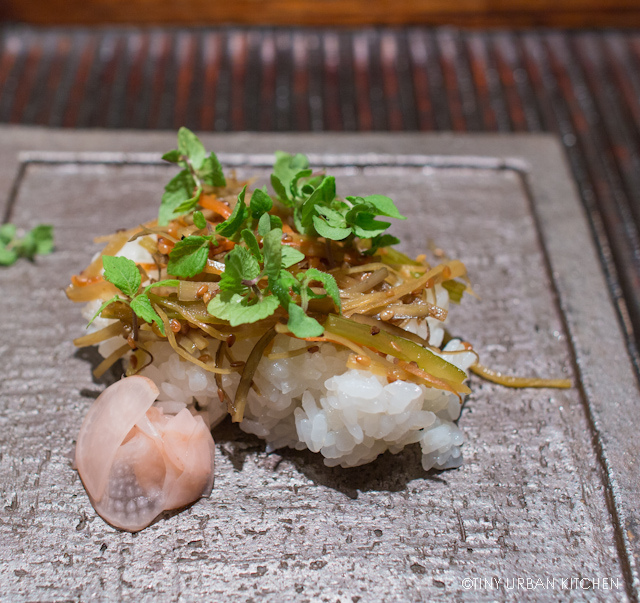
Vegan sushi isn't just about cucumber and avocado rolls. This Burdock Root with Kimipira Sushi was one of the best nigiri sushi "pieces" I'd ever had in the US. On top, thin, delicately julienned clies of burdock, carrots, and celery were marinated in soy sauce, sesame oil, and sugar.
The rice was incredible - among the best sushi rice I've ever had in the US, rivaling what I've had in Japan. To complete the elegant presentation, this huge "sushi" was topped with microshiso leaves and French breakfast radishes pickled to look like ginger.
This dish was fantastic. The slightly sweet and crunchy vegetables were a perfect accompaniment to the gorgeously chewy rice.
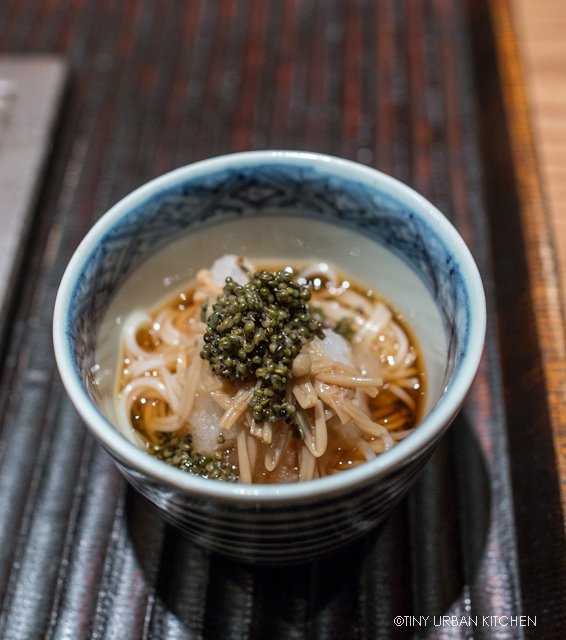
Next we had Somen Noodle with Summer Cypress. The enoki mushrooms on top look sort of like noodles, while the "caviar" you see on top are actually seeds from the Summer Cypress plant. The seeds of this plant, called "tonburi" in Japan, are a delicacy in Japan and have a texture that is similar to caviar. Their preparation is quite labor-intensive, involving soaking and boiling the seeds for a day before hand-rubbing their outer skins off.
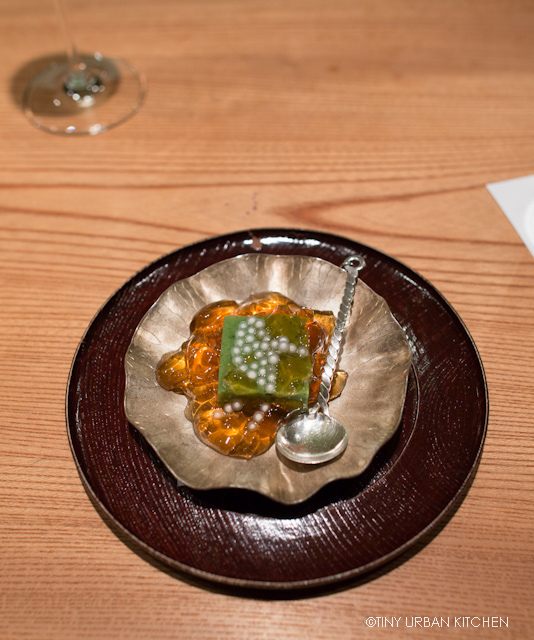
For dessert, we had this lovely light Matcha Bean Yokan and Hoji Tea Jelly. Asian desserts tend to be lighter and less sweet than American desserts, which I really like. Yokan is a dense gelatin-based block (made with matcha green tea here), while the jelly is less dense with a rich roasted tea flavor. Tiny tapioca balls on top complete the picture.
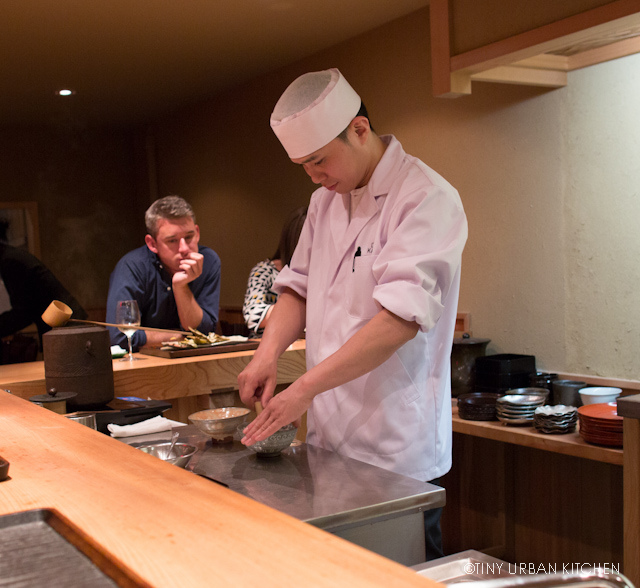
We watched Chef Ueshima as he executed the traditional Japanese art of making matcha with a bamboo whisk. Finely ground matcha powder is vigorously stirred with hot water using a bamboo whisk until a fine foam forms, almost like cappuccino.
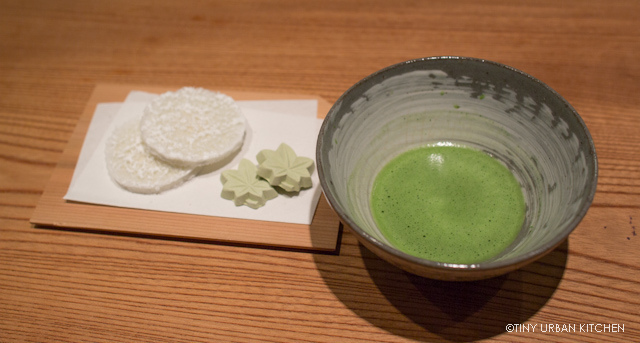
We drank the matcha with candies by Kyoto Suetomi in Japan.
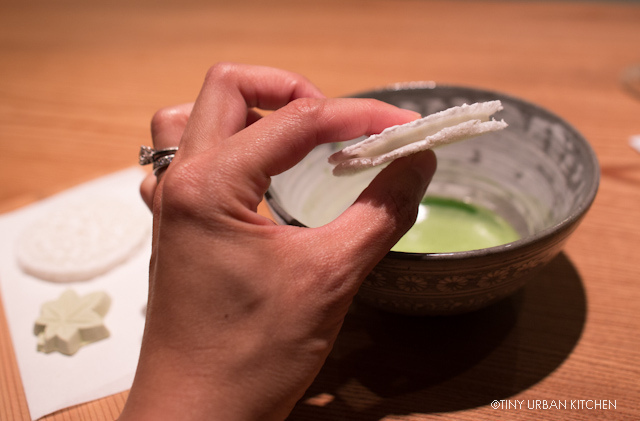
Two airy, light, sugar wafers were held together by a sweet, chewy filling in the center. The strong, slightly bitter matcha was a good contrast to the sweet sandwich cookies.
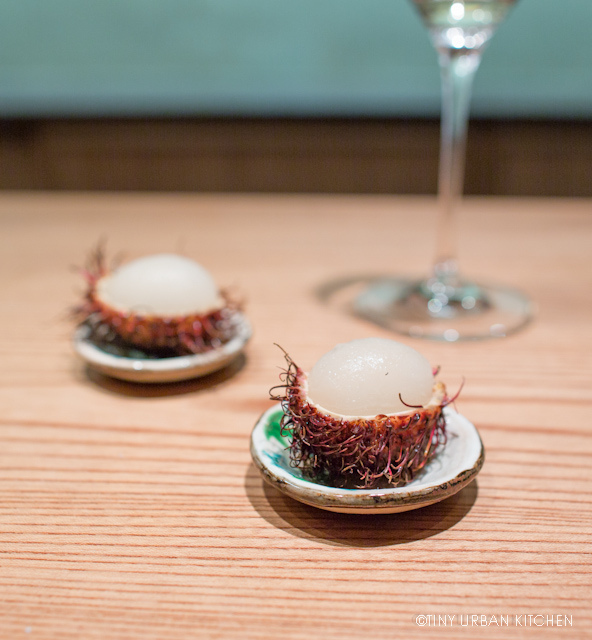
We ended the meal with fresh rambutan, a juicy tropical fruit that reminds me quite a bit of lychee.
Thoughts
Our meal at Kajitsu was really fun, although it took awhile for Chef Ueshima to warm up to us. Initially, he would just silently hand us the plates, allowing the server to explain each dish to us. It's quite understandable. After all, he had just come from Japan. We were literally trying the first set menu he had designed for the new restaurant. He felt uncomfortable with English, I think, which is why he stayed reasonably silent.
It wasn't until I tried to speak to him in Japanese that he relaxed and became a lot more friendly. He began trying to describe the dishes to us, using a mix of Japanese and English (after all, Bryan does not speak a lick of Japanese and mine's still pretty elementary!). With the help of smartphone dictionaries, we were able to communicate reasonably well, with much laughter in between.
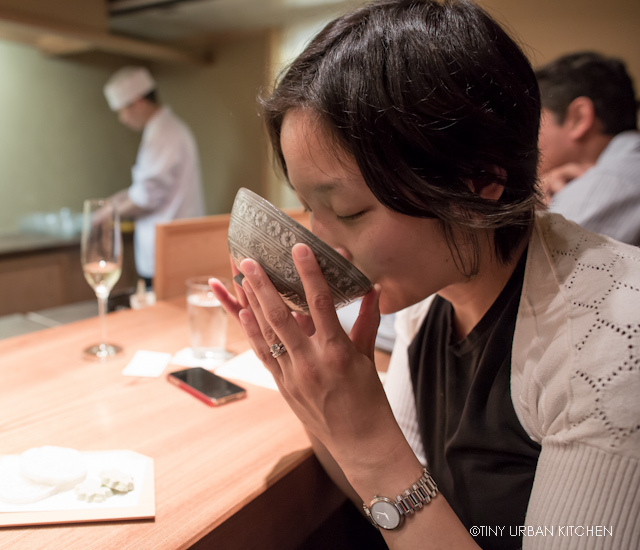
The food was excellent. It was clear that a lot of thought had been put into designing these dishes. There were several standout dishes (e.g., the Shitake Mushroom Soup, Fried Yuba Wrap, and Burdock Root with Kimipira Sushi), and an occasional one that made me scratch my head (Artichoke Chips with Vegetable Dip).
It's hard for me to gauge how it compares with former Chef Nishihara's work. Although I really enjoyed the meal, I was not as floored with the food as I had expected to be based on everyone's glowing reviews.
Nevertheless, it was still a really, really cool experience and definitely worth trying at least once. If you've never had shojin ryori before, it's really quite an enjoyable and eye opening experience. I sampled so many flavors and textures I had never tried before.
It's pretty incredible that the chef can pull off such an interesting, flavorful, and fascinating progression of flavors - all without any meat products.
Kajitsu
414 E 9th St
New York, NY 10009
All Rights Reserved

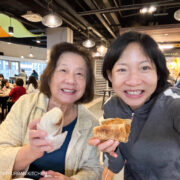
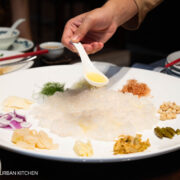
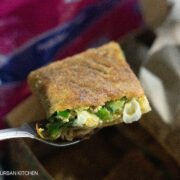
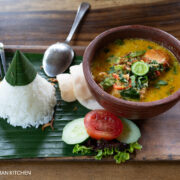
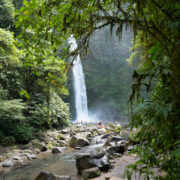

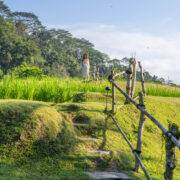
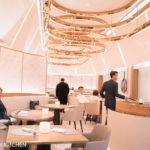
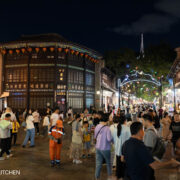
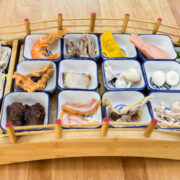
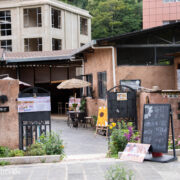
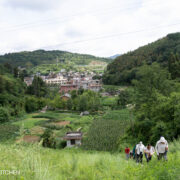

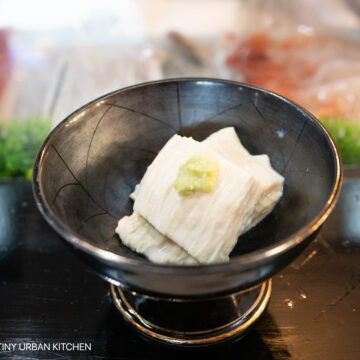
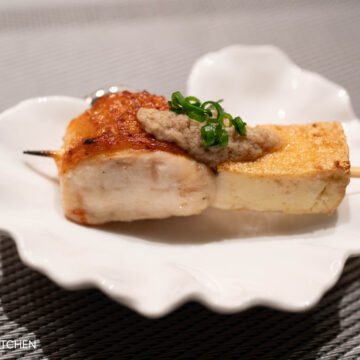
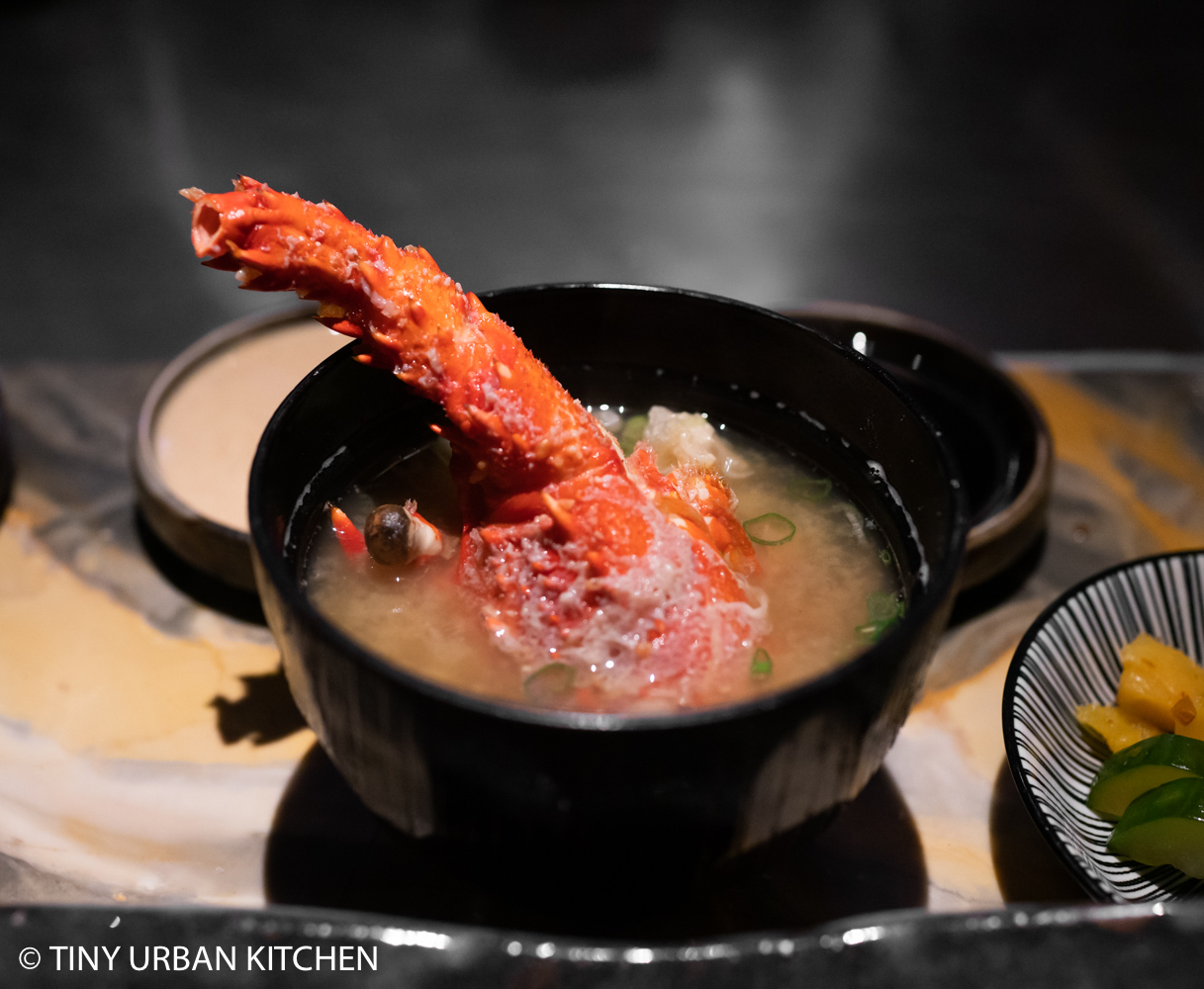
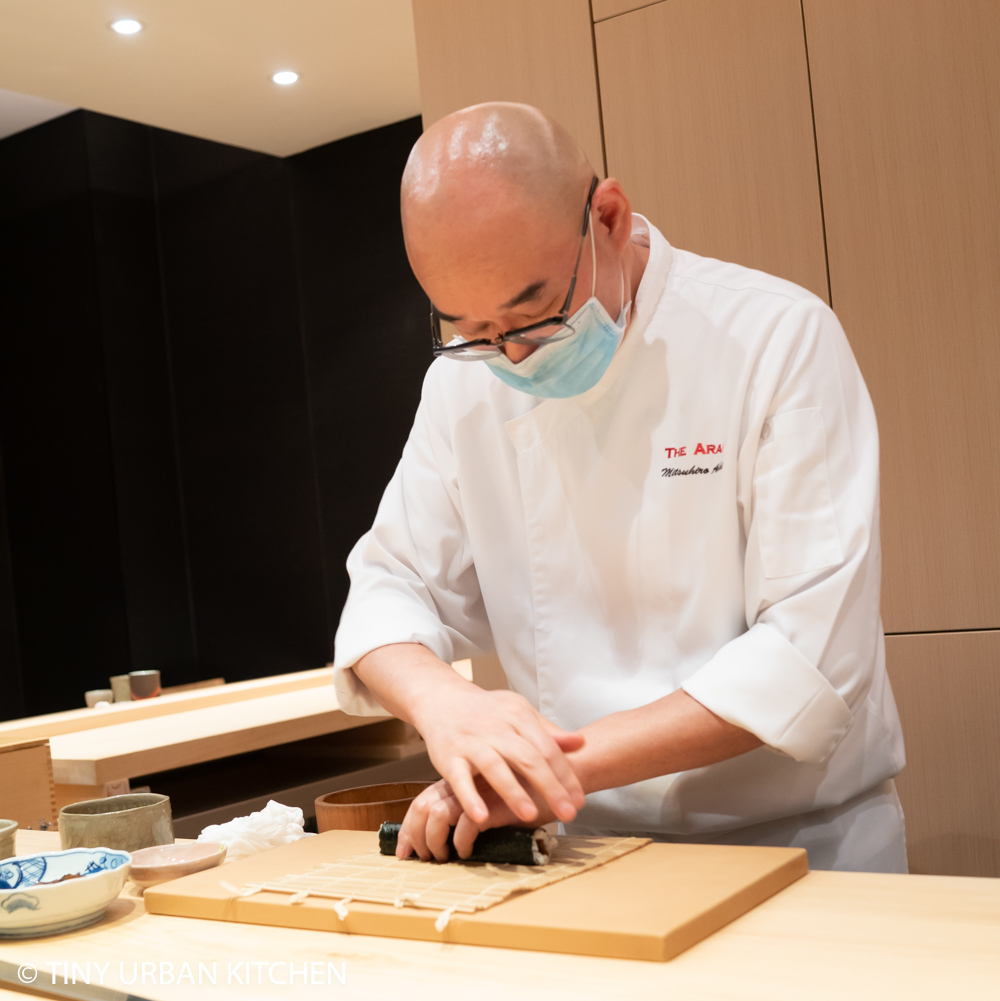
[…] with a touch of ocean flavors from the seaweed. It reminded me of a vegetarian dish I had at Kajitsu in New York City years ago. The rice at Sushi Tokami is a special type of grain that is mixed […]